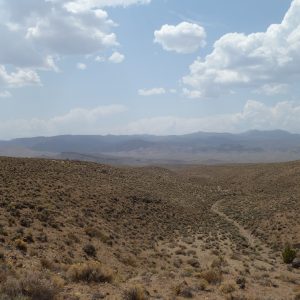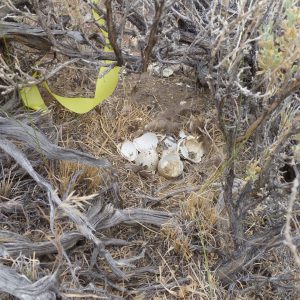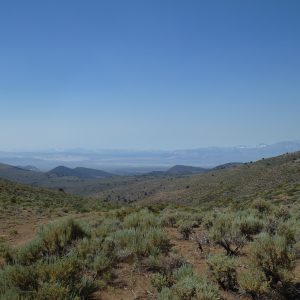So…this is it. These past five and a half months have seen me collecting hundreds of thousands of seeds, planting a couple hundred pounds more, doing plant surveys for everything from post-fire monitoring to sage grouse habitat assessments, and tracking sage grouse all over the (northern half) of the field office. It was a lot to pack into what in retrospect seems a very short time—even if I started the internship wondering if five months was going to feel too long.
I came into Bishop with relatively little plant experience and an attitude towards sage scrub that was ambivalent at best. After spending five months in the Bishop field office mainly focusing on seed collecting and vegetation surveys, I can say with confidence that plants are pretty darn cool (don’t get me started on fire restoration projects or shrub adaptations to arid climates unless you want to be there for a while). As for the scrublands—if it weren’t for the lack of deciduous trees and, well, moisture in general, I could happily spend years really getting to know the ecosystem.
Working in a small field office is great for getting to know people in every department, and I really got a sense of how the office as a whole operates. Seeing how the BLM carries out its mandate to manage for a variety of uses at the ground level was an experience that was both fascinating and valuable—seeing the challenges involved in balancing occasionally conflicting activities and the value of working directly with the public was valuable in shaping my ideas on what I want to research down the road.
Bishop proved to be an ideal location to see firsthand a variety of conservation efforts throughout the Eastern Sierra. Being in town for both the announcement of Sierra Nevada yellow-legged frog critical habitat and the announcement of the Bi-State sage grouse population as federally threatened provided opportunities to see different federal agencies interacting with the public, which was interesting in itself, and to get a better sense of the differences between the agencies and their philosophies on habitat management, which was fascinating.
All good things must come to an end, and once again it is onwards to the next thing—whatever that is. My time as a CLM intern has helped me articulate a few things about where I want to end up in the long run, and even if I don’t end up in a land management position my current research interests definitely reflect my time spent working with land managers on the ground.
Many thanks to my co-workers and friends in Bishop—I couldn’t have asked for a better group to work with. I certainly won’t forget the time I spent wandering the Bodie Hills in the name of all things sage grouse or exploring the Indian Fire any time soon.
Until next time!















